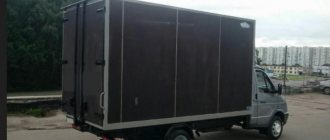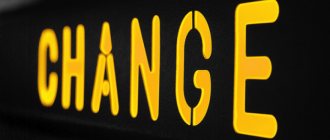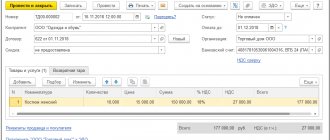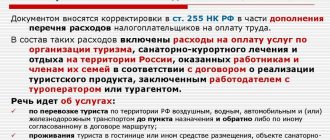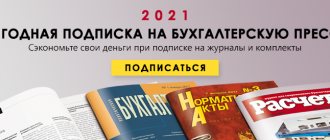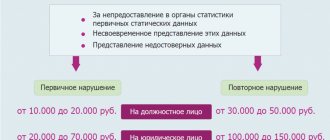There are several tax regimes in Russia, and depending on the choice, the amount of mandatory payments for them can vary greatly. In this article we will consider the type of activity of an individual entrepreneur - cargo transportation. Which taxation system should an entrepreneur choose to legally reduce the tax burden? To do this, we will make calculations and compare different options using an example.
In 2021, the UTII regime has been abolished; we have calculated which regime is now the most profitable for cargo transportation in this article.
Discussed taxation systems in the field of transport services:
- STS – provides for the payment of tax on the object “income” (6% rate) or “income minus expenses” (15% rate, but a reduced rate may be applied by decision of regional authorities). The choice of option is made by the company independently; changing the object of taxation during the year is prohibited. The main conditions for application in 2021 (Law No. 243 of 07/03/16) – number (no more than 100 people), total revenue for the reporting period (no more than 120 million rubles), revenue limit in terms of transition ( no more than 90 million rubles).
- UTII - applied by companies (enterprises or individual entrepreneurs) with no more than 20 units of transport, including leased vehicles (stat. 346.26, sub-clause 5, clause 2), if the type of activity is imputed according to regional legislation. If there are several types of OKVED, the indicators should be differentiated by maintaining separate records. The criteria for using UTII are the number of hired personnel (no more than 100 people), the share of participation of other legal entities in the business (no more than 25%).
- PSN - applied only to individual entrepreneurs by acquiring a patent for the calendar year at the place of residence of the entrepreneur (stat. 346.45 of the Tax Code). Criteria for use in 2021 – headcount in the PSN part (no more than 15 people), total revenue (no more than 60 million rubles). When concluding service agreements at the place of business registration, it is not necessary to purchase patents in other regions. This is confirmed by the Ministry of Finance in Letter No. 03-11-12/15 dated 02/07/13.
Note! OSNO (general system of taxation) in the field of cargo transportation is not considered here, since it is one of the most complex tax regimes from an accounting point of view. The fiscal burden on business under OSN is also considered burdensome in comparison with more profitable special regimes.
Example of tax burden calculation
For example, let’s take an entrepreneur from the city of Chekhov, Moscow region.
The initial data of his business are as follows:
- The number of cars he uses to transport goods is 3.
- The average monthly income of an entrepreneur is 900,000 rubles.
- The average monthly amount of expenses that are taken into account when calculating tax (insurance contributions included) is 630,000 rubles.
- The number of hired employees is 2, the monthly amount of insurance premiums is 9,000 rubles for each employee. Total per year: 2 * 9,000 * 12 = 216,000 rubles.
The insurance premiums of the entrepreneur himself will be:
- fixed part for income up to 300,000 rubles in 2021 - 36,238 rubles;
- 1% to the Pension Fund from the excess amount: (900,000 * 12 - 300,000) * 1% = 105,000 rubles;
- total amount of individual entrepreneur contributions for himself: 36,238 + 105,000 = 141,238 rubles.
Note: for UTII and PSN, the additional contribution to the pension insurance of individual entrepreneurs is calculated not from real income, but from those established by the state (imputed income on UTII or potentially possible on a patent).
Now we will calculate taxes on different systems, and at the same time we will tell you about the features of each of them.
Simplified taxation system
Entrepreneurs can apply the simplified tax system everywhere for almost any type of activity, but there are limitations:
- The individual entrepreneur must employ less than 100 people (average value for the year);
- his annual income must be less than 150 million rubles;
- the residual value of its fixed assets must also be less than 150 million rubles.
Read about changes to the simplified tax system for 2021 in this article.
At will, an entrepreneur can choose one of two options for paying tax under the simplified tax system:
- At a rate of 6% on income.
- At a rate of 15% of the difference between income and expenses.
In the first case, the expenses of the individual entrepreneur do not play any role and are not taken into account. The only exception is insurance premiums. They are subtracted from the amount of calculated tax. An entrepreneur and employees have the right to reduce the tax by a maximum of half due to the contributions paid. If an individual entrepreneur operates alone, then he can deduct his contributions from the tax in full, reducing it even to zero.
For the individual entrepreneur from our example, the tax calculation under the simplified tax system with the “Income” object will be as follows:
- tax base for the year: 900,000 * 12 = 10,800,000 rubles;
- tax amount: 10,800,000 * 6% = 648,000 rubles;
- total amount of insurance premiums per year for the entrepreneur himself and his employees: 141,238 + 216,000 = 357,238 rubles;
Due to insurance premiums, the tax can be reduced by 50%, i.e. up to 648,000/2 = 324,000 rubles.
If the simplified tax system is used with the object “Income minus expenses”, then the tax calculation for our individual entrepreneur will be as follows:
(900,000 - 630,000) * 12 * 15% = 486,000 rubles.
In this case, insurance premiums do not reduce the tax amount, since they are already included in expenses. 486,000 per year .
In addition, this mode has the following features:
- expenses that reduce the tax base must be documented;
- certain types of expenses are not taken into account when calculating the tax base;
- There is a minimum tax value - this is 1% of the amount of income.
Which taxation to choose for cargo transportation
Review characteristics collected in a single table will help you evaluate the positive and negative nuances of various tax regimes. Entrepreneurs should note that the simultaneous use of PSN and UTII is not allowed. The planned OKVED codes must be selected before registering the company or added to existing ones during the work process.
Comparative table of the taxation system for transport companies:
| Sign | simplified tax system | UTII | PSN |
| Who has the right to use | Organizations and individual entrepreneurs | Organizations and individual entrepreneurs | IP |
| Limitations on the number of means of transport | No | 20 | No |
| Validity | No limits | Until 2021 (extended by the President on June 2, 2016 in Bill No. 1025686-6) | Within a calendar year |
| Region limitation | No | Region/subject of the Russian Federation for registration as a UTII payer | Region/subject of the Russian Federation for issuing a patent in terms of concluded transactions |
| Number limit (persons) | 100 | 100 | 15 |
| Annual revenue limit (RUB million) | 120 | No | 60 |
| Tax rate (%) | 6/15 (in some regions it may be reduced by decision of municipalities) | 15 (in some regions it can be reduced to 7.5) | 6 (in some regions it can be reduced to 0 for certain categories of individual entrepreneurs) |
| Main basic indicators for tax calculation | Object of taxation (“income” or “income-expenses”) | Basic profitability, physical indicators, coefficients K1, K2 | The amount of expected income, interest rate, validity period of the PSN |
| Payments that reduce the amount of tax payable | With a limit of 50% - insurance payments in terms of the Pension Fund, Compulsory Medical Insurance, Social Insurance Fund; contributions under voluntary insurance contracts; trade fee in cases specified by law (stat. 346.21 clause 8 of the Tax Code) | With a limit of 50% - insurance payments in terms of the Pension Fund, Compulsory Medical Insurance, Social Insurance Fund; contributions under voluntary insurance contracts; hospital benefits. For individual entrepreneurs – fixed payments without restrictions | No |
| Tax relief | No VAT, property, profit are paid | VAT is not paid (except for import transactions), property, personal income tax in terms of imputed income for individual entrepreneurs, profit for legal entities | VAT, property, personal income tax are not paid |
| Difficulty of accounting | Careful accounting of income and expenses is required by drawing up KUDiR. Declarations are submitted at the end of the year. Accounting is allowed to be carried out in a simplified manner for small business entities | Declarations are provided quarterly. Accounting is carried out by enterprises. Individual entrepreneurs are exempt from keeping records and filling out registers for recording transactions (Law No. 402-FZ, paragraph 1, article 2) | Submission of declarations and other reports is not required. Costs and income are not accounted for |
UTII
The single tax on imputed income is considered a more favorable tax regime for cargo transportation. But here a lot depends on the place of residence of the individual entrepreneur. The fact is that UTII does not apply everywhere. Whether to introduce this system on the territory of a city or other settlement is decided by local authorities. They also determine the list of activities for which this regime is introduced. However, the basic areas of business for “imputation” are prescribed in the Tax Code (Article 346.26), and the transportation of goods is included in this list. But there is a limitation - individual entrepreneurs should have no more than 20 machines.
The default UTII rate is 15%, although local legislators can reduce it to 7.5%.
The tax base for each month is calculated as follows: Basic profitability * Physical indicator * K1 * K2
The parameters of this formula mean:
- The physical indicator for cargo transportation is the number of vehicles.
- Basic profitability is the amount of imputed income that an entrepreneur can receive per month per unit of physical indicator.
- K1 is a deflator coefficient, which is calculated annually by the Ministry of Economic Development depending on the level of inflation.
- K2 is a reduction coefficient that is set by local authorities to ease the tax burden. It may vary depending on the type of activity and location, but no more than 1.
If the number of cars does not change during the year, then UTII can be calculated using the formula: Tax base for the month * 12 months * 15%. To calculate UTII for individual entrepreneurs from the example, we will collect all the necessary data in a table.
| Index | Meaning |
| Physical indicator (Article 346.29 of the Tax Code of the Russian Federation) | 3 cars |
| Basic profitability (Article 346.29 of the Tax Code of the Russian Federation) | 6,000 rubles per month for 1 car |
| K1 in 2021 (order of the Ministry of Economic Development of Russia dated October 30, 2018 No. 595) | 1,915 |
| K2 for cargo transportation in the city of Chekhov (decision of the city Council of Deputies of November 9, 2012 No. 71/10) | 1 |
| Tax rate | 15% |
| Number of months | 12 |
The calculation will look like this: 6,000 * 3 * 1.915 * 1 * 12 * 15% = 62,046 rubles.
As in the simplified system with the “Income” object, on UTII you can deduct insurance premiums from the tax amount. The rule is the same: if an individual entrepreneur has employees, then he can reduce the tax due to contributions by 50%. This means that the entrepreneur will have to pay a total of 62,046 / 2 = 31,023 rubles to the budget.
A real example of calculating taxes payable
To determine the optimal system for taxation of cargo transportation, we will calculate the tax base and possible amounts of taxes payable using a specific example.
Initial data:
- The legal form of the carrier is individual entrepreneur.
- Municipal entity - Rostov-on-Don.
- Activities: cargo transportation.
- Number of transport units – 12.
- Salaried employees – 3 people.
- Revenue income for 4 quarters. – 875,000 rub.
- Insurance premiums for employees were paid in Q4. 2021 – RUB 37,500
- When working for UTII, fixed contributions were paid in the 4th quarter. 2016 – 7,800 rub.
Table of calculations of tax payments paid for the reporting period:
| Tax amount | simplified tax system | UTII | PSN | |
| "Income" | "Income - expenses" | |||
| Tax rate taking into account the characteristics of the municipality | 6 % | 10% (Law No. 843-ZS of May 10, 2012) | 15%, DB = 6,000 per 1 car; K1 = 1.798, K2 = 1 | 6%, potential income for 12 cars = 3,832,000 Basis - Law No. 843-ZS of May 10, 2012. |
| Tax calculation | 875,000 x 6% = 52,500 – 26,250 (50% of the accrued tax amount) = 26,250 | (875,000 – 37,500) x 10% = 83,750 | 6,000 x 12 x 1.798 x 1 x 15% = 19,418.4 x 3 months. = 58,255.20 – 29,127.60 (50% of the accrued tax amount) = 29,127.60 – 7,800 = 21,327.60 | The calculation was made for 3 months, based on the patent validity period of 1 year. For 12 cars 57,480 = 3,832,000 x 6% / 12 x 3 |
| Total according to the applicable tax regime payable, in rubles. | 26 250 | 83 750 | 21 327,60 | 57 480 |
conclusions
Given the specified initial data, including the region of operation, UTII becomes the most optimal regime for entrepreneurs. Additionally, when calculating the imputed tax, fixed payments are taken as reducing amounts, paid by the individual entrepreneur “for himself” at the established rates.
Allows you to reduce the tax burden on the company and the use of the simplified tax system “income”. In case of in-depth miscalculations, the use of a patent and the simplified tax system “income-expenses” turns out to be unprofitable.
In terms of creating records and reflecting business transactions, entrepreneurs enjoy an advantage, since by law they are exempt from the need to conduct accounting.
Legal entity companies can use a simplified accounting methodology with the submission of mandatory reports according to a shortened list. As for the above calculations, they are valid not only for individual entrepreneurs, but also for organizations.
